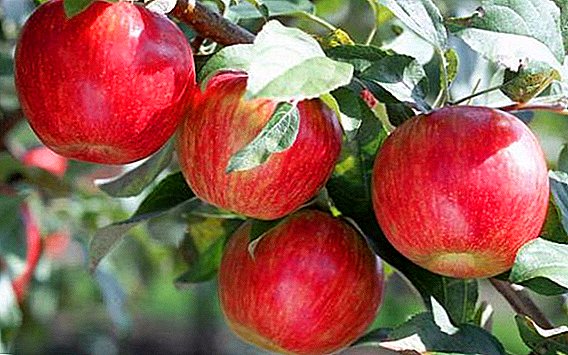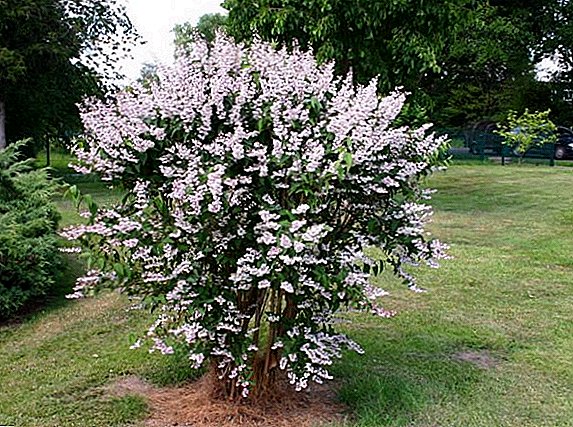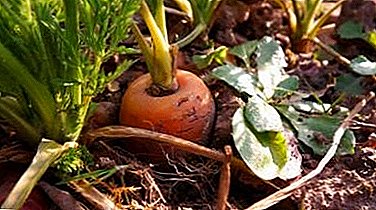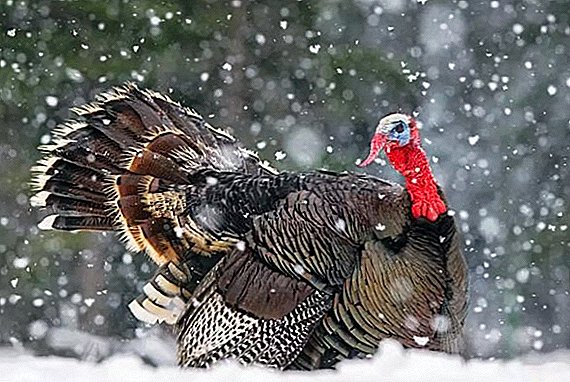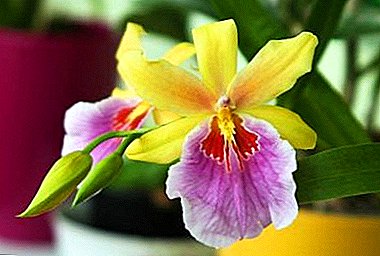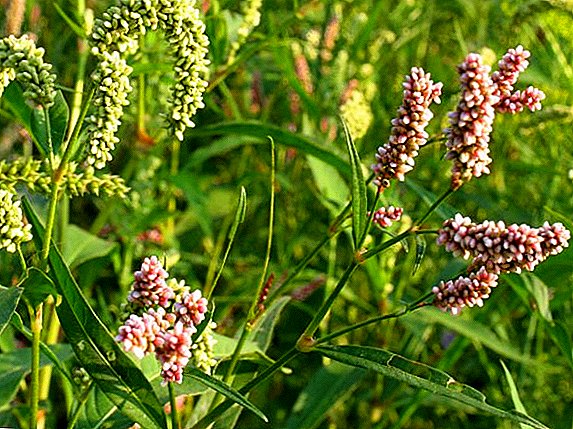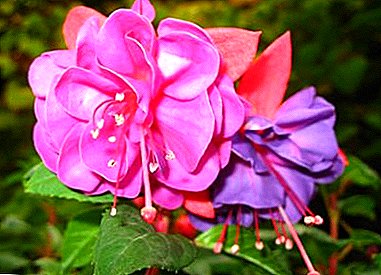
Fuchsia - an interesting houseplant with bright flowers. Came to us from America and New Zealand. Its name was in honor of the German doctor and botanist Leonard von Fuchs.
Popularly, this flower is also called "ballerina", for its unusual flowers. Let us tell you what kind of care the plant requires at home and in the garden, what to do with it in the fall and in other seasons.
How to care for a house plant that it was healthy and blossomed?
The plant is unpretentious, it is not difficult to care for him. Like all indoor plants, fuchsia requires special care. Here's how to care for the plant at home, including in winter.
- The pot for a plant can be any, the main thing that there would be a drainage opening. The size of the pot should correspond to the dimensions of the plant, it is important that the entire root system is involved in the soil, the soil that is not developed by the roots begins to rot. The reason for transplanting home fuchsia into a larger pot is a quick drying of the soil.
Attention! If the pot is dark in color, then for the summer, it is recommended to wrap it in white paper to avoid overheating from the sun's rays.
- What land does this flower love? Preparing the soil for fuchsia, you must follow the following composition: mix wood and leaf earth, add peat, sand sand in equal proportions. It is very important to make a drainage layer of stones or foam. Such a composition of the soil does not lead to soil tamping.
- Fuchsia does not like dry rooms; in winter, the place for the flower should be chosen away from the heating appliances. It is recommended to periodically spray with a spray.
- The plant needs sunlight, but does not tolerate direct sunlight, a place for fuchsia should be chosen in a bright room, where there is a lot of ambient light. In the winter, with a lack of light, it is recommended to use artificial light sources. Lack of lighting manifests itself in the stretching with the growth and absence of flowering.
- The temperature of the content depends on the season, fuchsia in nature does not like heat. In summer, the optimum temperature is 18-20 degrees. In winter, fuchsias feel good at a temperature of 8-10 degrees, or no higher than 15 degrees Celsius.
- The flower needs abundant watering, the soil should always be wet. Water for irrigation should settle and be at room temperature. Do not forget that watering is best alternated with spraying.
Next, a visual video about the care of fuchsia at home:
A photo
In the photo below you can see how a fuchsia looks, growing at home:
And this is a fuchsia grown in the garden:
How to properly feed?
A prerequisite for bright blooming fuchsia is fertilizing fertilizer. Fertilizers should be bought in special stores, as in ready-made fertilizers the perfect balance of organic minerals and elements is observed, just for this type of plants.
It is not necessary to overdo it with top dressing, with excessive fertilizer fuchsia begins to grow actively and practically does not give flowers. It is best to feed the flower no more than twice a month.
It is not recommended to use fertilizers of unknown origin, and fertilizers that are intended for other types of plants. In winter, the fuchsia is at rest and does not need fertilizer..
How does outdoor cultivation differ from keeping a pot in a house?
Fuchsia is known as a home plant, but on the open field it can present itself on the other side. Garden fuchsia includes the best qualities. Having transplanted the plant into the open ground, you no longer recognize it, it will surprise you with its flowering, and the rapid growth and powerful growth will turn your flower into a small tree.
Fuchsia blooms in open field all summer, and in the fall of care, the plant is dug up and sent to hibernate in a cool and bright room. Just like with indoor growing, windless areas will suit on the street of fuchsia, preferably under the wall of the building, with sufficient lighting. Unlike homemade fuchsia, the soil can approach neutral. Despite street cultivation, fuchsia needs to be irrigated periodically.
The plant in the open field always grows faster and has more lush flowers than the representatives living in apartments. Going outdoors involves preparing the plant for the winter, which consists of digging out a flower and gradually reducing its watering. Home fuchsia during the winter will cost only a cooler place.
Breeding
Reproduction of room fuchsia occurs by cuttings and seeds.:
 Propagation by cuttings is best combined with the time of pruning. For rooting the process, it is immersed in water, or a special temporary soil consisting of a mixture of wet sand and vermiculite. The process of root development can last from three days to one month. During rooting, cuttings are periodically sprayed with a spray gun. How to grow a fuchsia from a sheet, read here.
Propagation by cuttings is best combined with the time of pruning. For rooting the process, it is immersed in water, or a special temporary soil consisting of a mixture of wet sand and vermiculite. The process of root development can last from three days to one month. During rooting, cuttings are periodically sprayed with a spray gun. How to grow a fuchsia from a sheet, read here.- Seed propagation involves sowing in the appropriate soil. Seeds usually germinate well, the main thing is to keep the soil moist. As it grows, fuchsia is transplanted into a larger pot: if watering has to be done daily, it may indicate that the flower is cramped and it is time to enlarge the pot.
Next, a visual video about the reproduction of fuchsia:
Diseases and their prevention
Diseases usually affect fuchsia, like all houseplants. If you pay enough attention to the flower, then about diseases and pests can not worry. When a problem is detected, you only need to eliminate the focus and the plant itself will recover. Diseases can be divided into two categories.:
- Diseases from improper care.
- Damage by fungus and various pests.
With improper watering can begin to rot root. How to save the plant in this case? To restore the health of the flower is necessary to reduce watering. When a fungus or other leaf lesions are detected by parasites, it is necessary to purchase a special tool in the store and isolate fuchsia from other plants for the duration of the treatment.
Fuchsia can be proud of its noble origin. The first plants were imported to Europe at the beginning of the 19th century, and since then, breeders have developed many varieties. Fuchsia is an evergreen shrub that will grow remarkably both in an apartment and in a garden plot.


 Propagation by cuttings is best combined with the time of pruning. For rooting the process, it is immersed in water, or a special temporary soil consisting of a mixture of wet sand and vermiculite. The process of root development can last from three days to one month. During rooting, cuttings are periodically sprayed with a spray gun. How to grow a fuchsia from a sheet, read here.
Propagation by cuttings is best combined with the time of pruning. For rooting the process, it is immersed in water, or a special temporary soil consisting of a mixture of wet sand and vermiculite. The process of root development can last from three days to one month. During rooting, cuttings are periodically sprayed with a spray gun. How to grow a fuchsia from a sheet, read here.